Whether you’re jetting off for a quick weekend getaway or embarking on a month-long backpacking expedition, one thing’s for sure: packing can make or break your trip.
Trust me, I’ve been there—from overpacking and lugging around unnecessary items to forgetting essentials and scrambling to find replacements in unfamiliar places. But over the years, I’ve picked up some game-changing packing tips that have transformed my travel experience, and I’m excited to share them with you.
Why is efficient packing so important? It sets the tone for your entire journey. When you pack smart, you start your trip feeling organized and in control. You’re not weighed down by excess baggage (literally and figuratively), and you have everything you need at your fingertips. It’s like giving yourself a head start on a great vacation.
As someone who’s circled the globe a few times, I’ve learned these tips through trial and error, conversations with seasoned travelers, and a fair bit of research. I’ve packed a lot of different bags for a lot of different trips, and I’ve made my fair share of mistakes along the way.
So, whether you’re a newbie traveler or a seasoned globetrotter, I’m confident you’ll find some nuggets of wisdom here to elevate your packing game. By the time you finish reading, you’ll be equipped with all the knowledge you need to pack like a pro for your next adventure.
1
Plan Ahead
Successful packing starts long before you open your suitcase. Planning ahead is crucial, and it all begins with a well-thought-out packing list.
Creating a packing list might seem like an extra step, but trust me, it’s important. It ensures you don’t forget any essentials and helps prevent over-packing.
I like to start my list about a week before my trip, jotting down items as they come to mind. This gives me time to remember those easily forgotten items like chargers, medications, or specific gear I might need.
Consider the length of your stay, the climate of your destination, and the activities you have planned. A weekend city break will require a very different packing strategy compared to a two-week beach vacation or a mountain trekking adventure.
2
Choose the Right Luggage
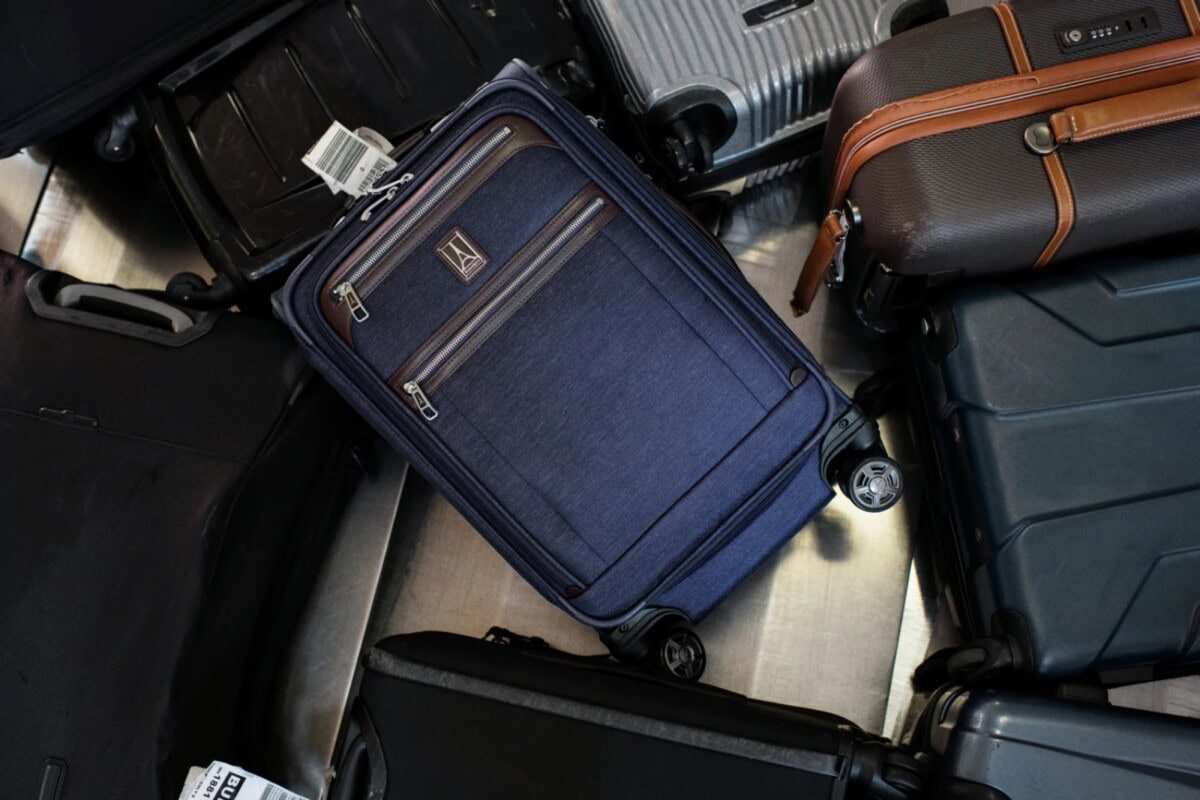
I can’t stress enough how critical it is to buy the right luggage. Your luggage is one of the most important pieces of travel gear—it can make your journey smooth and enjoyable, or it can be a constant source of frustration. I learned this the hard way when I had not just one, but two spinner suitcases break during six months traveling in Europe.
First, consider the type of traveler you are and the kinds of trips you usually take. If you’re a frequent flier who likes to zip through airports, a carry-on suitcase might be your best bet. These glide effortlessly beside you, saving your arms and shoulders from strain.
On the other hand, if you’re more of an adventurous traveler, a travel backpack could be ideal. Backpacks are much better if you’re covering less manicured terrain.
Regardless of the style, opt for luggage that’s durable and lightweight. Look for materials like polycarbonate for hard-shell suitcases or high-quality, water-resistant fabrics for soft-sided bags.
3
Pack Versatile Clothing
When it comes to choosing the best travel clothing, the mantra “less is more” couldn’t be more true. The secret to packing light without sacrificing style is to bring versatile pieces that can be mixed and matched to create multiple outfits.
I like to choose clothing colors that all go together so I can combine them in different ways. Neutral colors like gray, black, white, and browns are always safe bets, but feel free to add in some color.
Here’s a pro tip: think in terms of outfits rather than individual pieces. Before you pack an item, ask yourself, “Can I wear this at least three different ways?” If the answer is yes, it’s probably a good candidate for your suitcase.
Some versatile pieces to consider include:
- A pair of comfortable, well-fitting jeans
- Plain t-shirts in neutral colors
- A little black dress (for women) or a A classic white button-down shirt (for men)
- A lightweight cardigan or jacket for layering
- Comfortable walking shoes that can be dressed up or down
By packing items that work well together, you’ll have plenty of outfit options without overstuffing your luggage.
4
Choose Travel-Friendly Fabrics
The fabrics you choose can make a big difference in your comfort and the efficiency of your packing. When selecting clothes for travel, look for lightweight, breathable, and wrinkle-resistant fabrics.
Synthetic fabrics like polyester, nylon, and spandex blends are excellent choices. They’re lightweight, quick-drying, and often wrinkle-resistant. Plus, they tend to be more durable and stain-resistant than natural fibers.
But if you really want to up your travel fabric game, I highly recommend investing in merino wool clothing. Trust me on this one. Merino wool is the ultimate travel fabric, and here’s why:
It’s comfortable in both cool and warm weather, and it wicks moisture away and dries quickly. It’s also naturally odor-resistant, meaning you can wear it multiple times between washes.
I’ve worn merino wool t-shirts for a week straight while traveling (don’t judge!), and they still smelled relatively fresh. This means you can pack fewer clothes and do laundry less often—a win-win for efficient packing.
Other good fabric choices include:
- Bamboo Rayon: Soft, breathable, and naturally antimicrobial
- Modal: Soft, resistant to shrinking and fading
- Tencel: Lightweight, breathable, wrinkle resistant, and eco-friendly
By choosing the right fabrics, you can pack less, stay comfortable, and spend less time worrying about laundry and wrinkles during your trip.
5
Roll Your Clothes
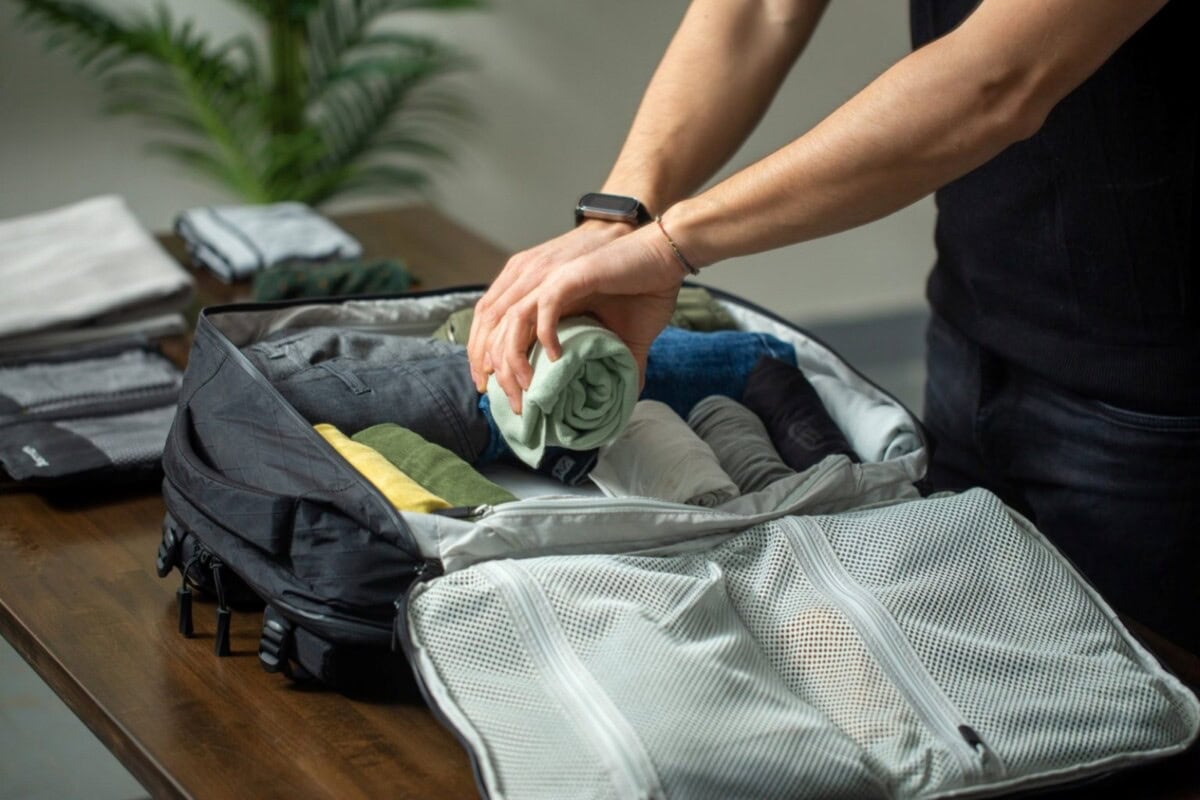
Now that we’ve covered what clothing to pack, let’s talk about how to pack it. You’ve likely heard this advice before, but I think it’s a great tip:
Instead of folding your clothes flat, try rolling them. This technique saves space in your luggage, helps prevent wrinkles, and makes it easier to see and access your clothes in your suitcase. I’ve been rolling clothes to pack for years, and I won’t ever go back to just folding.
Here’s how to do it:
- Lay the item flat.
- Fold in the sleeves or any protruding parts.
- Start from one end and tightly roll the garment, smoothing out any wrinkles as you go.
- For pants, fold them in half lengthwise first, then roll from the cuffs up.
The roll method works particularly well for casual clothes like t-shirts, pants, and even underwear and socks.
For more structured items like blazers, dress shirts, or bulkier dresses, rolling doesn’t really work, so you’ll just fold these like normal.
One of the great things about rolled clothes is that they can be tucked into the nooks and crannies of your suitcase, maximizing every inch of space. Plus, when you arrive at your destination, you can simply unroll your clothes and hang them up, and most wrinkles will naturally fall out.
6
Use Packing Cubes
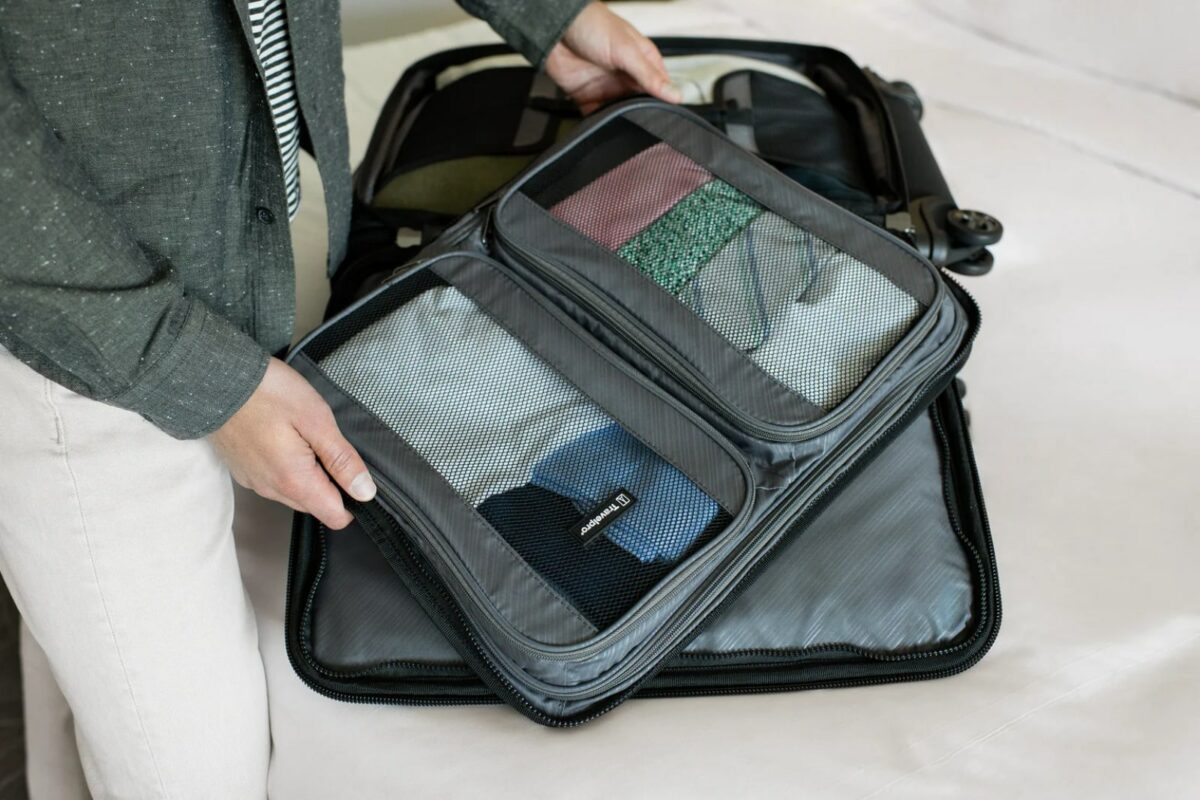
If there’s one packing tool I swear by, it’s packing cubes. If you aren’t using packing cubes, you really should try them. They’re like mini suitcases inside your suitcase, and they don’t cost much at all.
Packing cubes help you organize your belongings, maximize space, and keep everything tidy throughout your trip. Here’s how to use them effectively:
- Use different sized cubes for different types of items. For example, a large cube for tops, a medium for bottoms, and a small one for underwear and socks.
- Alternatively, pack complete outfits in each cube. This is particularly useful if you’re visiting multiple destinations with different climates.
- Use compression cubes to squeeze more into less space. These have an extra zipper that compresses the contents, perfect for bulky items like sweaters.
- Choose cubes in different colors or patterns to easily identify what’s in each one.
Packing cubes not only help you organize your suitcase, but they also make unpacking and repacking a breeze. When you arrive at your destination, you can simply transfer the cubes to drawers or shelves, keeping your belongings organized throughout your stay.
7
How to Do Laundry on the Road
For trips longer than about 5 days, I definitely recommend doing laundry mid-trip rather than trying to pack enough clothing for the entire time.
I’ve done laundry in three different ways during my trips: going to a laundromat (which is affordable, but takes time out of the day), hotel laundry service (which is very convenient, but expensive and not available in every hotel), and hand-washing clothes in the sink (which is cheap, but a bit annoying).
Using a laundromat or hotel service is pretty straightforward. If you plan on using a laundromat, just make sure to bring coins and a small container of detergent or laundry sheets, since not all laundromats sell detergent.
I’ve also washed my clothes in a hotel sink more times than I can count (what can I say, I’m cheap), and I learned a few techniques
- Pack quick-drying fabrics (remember our friend merino wool?). These can be washed in a sink and will dry overnight.
- Travel laundry wash comes in small containers and works perfectly for hand-washing.
- Hotel shampoo works in a pinch as laundry soap.
- After you scrub your clothes in hot water with the soap, drain and rinse multiple times until the water comes out clear.
- Use a towel to pat your towels dry-ish, and then you can leave clothes out flat on a towel or hang them on chair backs or anything else handy to dry.
Once you get used to it, hand-washing really isn’t that bad.
8
Bring a Laundry Bag
Speaking of laundry, here’s a simple tip that’s easy to overlook: pack a separate laundry bag. This is a small detail, but I quickly found how important it is to keep my clean and dirty clothes separate.
Ideally, choose a drawstring fabric bag that’s lightweight and doesn’t take up much space when empty. Look for one that’s water-resistant and anti-microbial—this will help contain any odors and moisture from your dirty clothes.
If you don’t want to buy a special laundry bag, a simple plastic bag can do in a pinch. However, I prefer a reusable fabric bag for sustainability reasons and because it’s more durable.
9
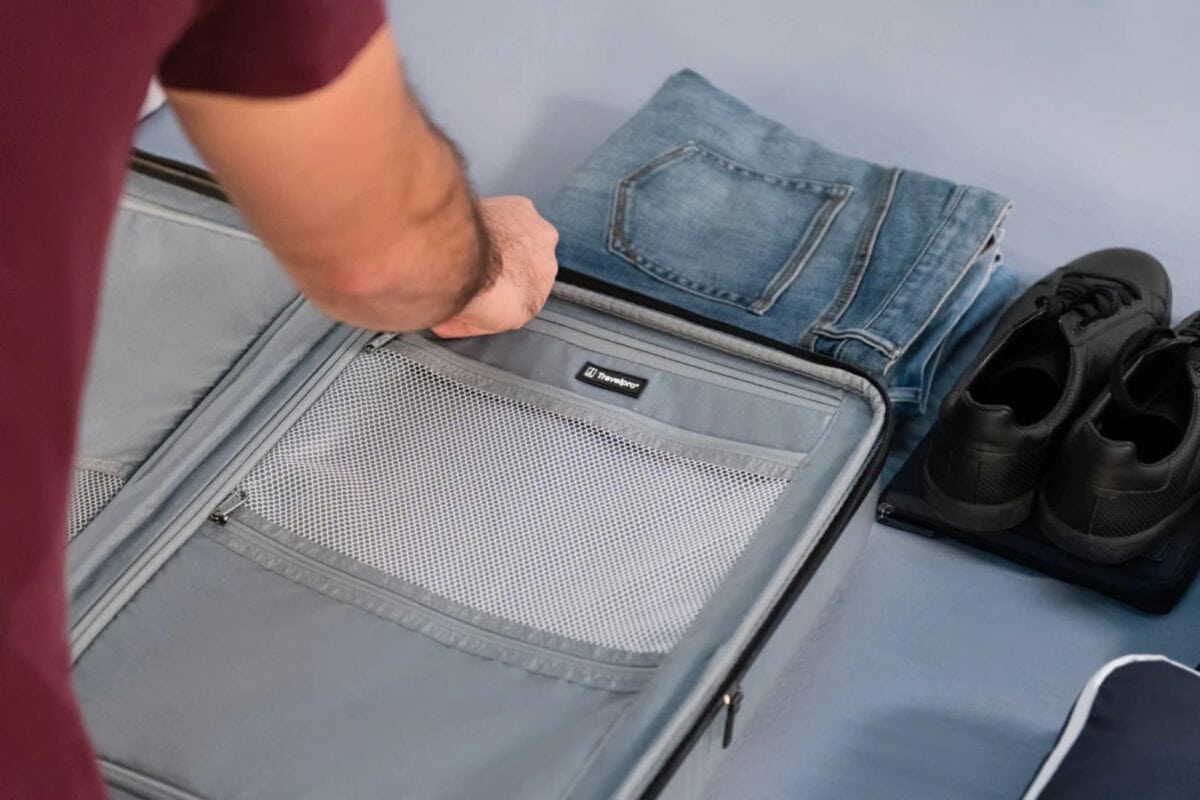
Shoes are often the culprit of overpacking. It’s tempting to want options, but shoes are bulky, heavy, and take up a lot of precious luggage space. That’s why I always recommend bringing fewer shoes. Seriously, do you really need that extra pair of court shoes when you’re already bringing dress shoes, running shoes, flip flops, sandals, and slippers?
The key is to choose shoes that are comfortable and can serve multiple purposes. The best travel shoes are extremely versatile. They are comfy enough for long days of walking or even hiking, but you can also dress them up for dinner. You can do most trips with just one do-it-all pair of shoes.
As a general rule, try to restrict yourself to 2-3 pairs of shoes max for most trips. You don’t really need more than that unless you’re participating in a fashion show. This might include:
- A comfortable pair of walking shoes or sneakers
- A versatile pair that can be dressed up or down (like loafers or ankle boots)
- Flip-flops or sandals (if you’re headed somewhere warm or plan on using shared showers)
When packing shoes, stuff them with socks or other small items to maximize space. You can also use shoe bags to keep the rest of your luggage clean.
10
Use Travel-Sized Toiletries
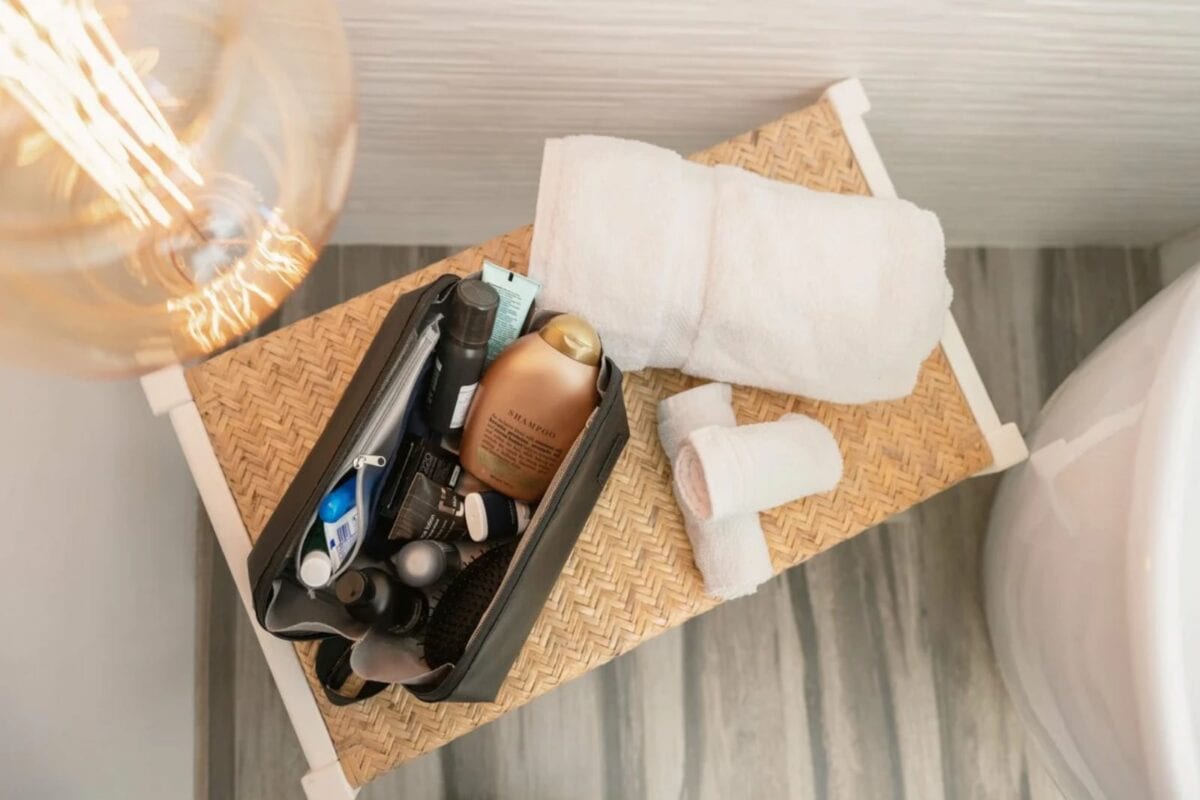
When it comes to toiletries, size matters—especially if you’re trying to pack light or stick to carry-on luggage.
Most airlines restrict liquids in carry-on bags to containers of 3.4 ounces (100ml) or less, all fitting into a single, clear, quart-sized bag. This might seem limiting, but it’s actually a great opportunity to streamline your toiletry kit.
You can either buy travel-sized toiletries or transfer your standard toiletries into small reusable containers.
I’m particularly fond of solid toiletries like shampoo bars and solid deodorants because they don’t count towards your liquid allowance, they last longer than their liquid counterparts, and there’s no risk of spills in your luggage. Finding your suitcase full of shampoo is not a fun experience, believe me.
Remember, you can always buy toiletries at your destination if you run out or forget something. It’s not like you’re going to the middle of Siberia—unless, of course, you are going to the middle of Siberia. In that case, yes, definitely make sure you bring enough toiletries.
11
Compartmentalize Toiletries
I just learned this tip recently, and I’m already fully on board. Instead of throwing everything into one big toiletry bag, consider compartmentalizing into several smaller bags.
Using smaller bags or pouches within your main toiletry bag can make a world of difference. You might have separate compartments for hair products, skincare items, dental hygiene, cosmetics, and medications.
This system has several benefits:
- It’s easier to find what you need quickly without digging through one big bag.
- It helps prevent spills from affecting all your toiletries.
- You can easily grab just the items you need (like taking just your dental hygiene pouch to a shared bathroom in a hostel).
- It makes security checks smoother if you need to remove your liquids bag.
Clear or mesh pouches work well for this, as they allow you to see the contents easily. You can also use small ziplock bags in a pinch.
For medications, always keep them in their original containers with clear labels. It’s a good idea to bring a copy of your prescriptions as well, especially when traveling internationally.
12
Pack Essentials and At Least One Outfit in Your Carry-On
Even if you’re checking a bag, you’ll want to have a carry-on or at least a personal item bag to keep essentials with you. Checked luggage gets lots more often than you would think. Your carry-on should contain all your essential items and at least one complete change of clothes.
Here’s what I always make sure to have in my carry-on:
- Essential toiletries
- Medications
- Important documents (passport, travel insurance, etc.)
- Electronics and chargers
- A change of underwear and socks
- At least one versatile outfit
- A light jacket or sweater (planes can get chilly!)
- Any valuables like jewelry
Having these items with you ensures that you can manage for a day or two even if your checked luggage doesn’t arrive when you do. It gives you peace of mind and allows you to start enjoying your trip right away, rather than stressing about lost belongings.
13
Better Yet, Travel with Only a Carry-On
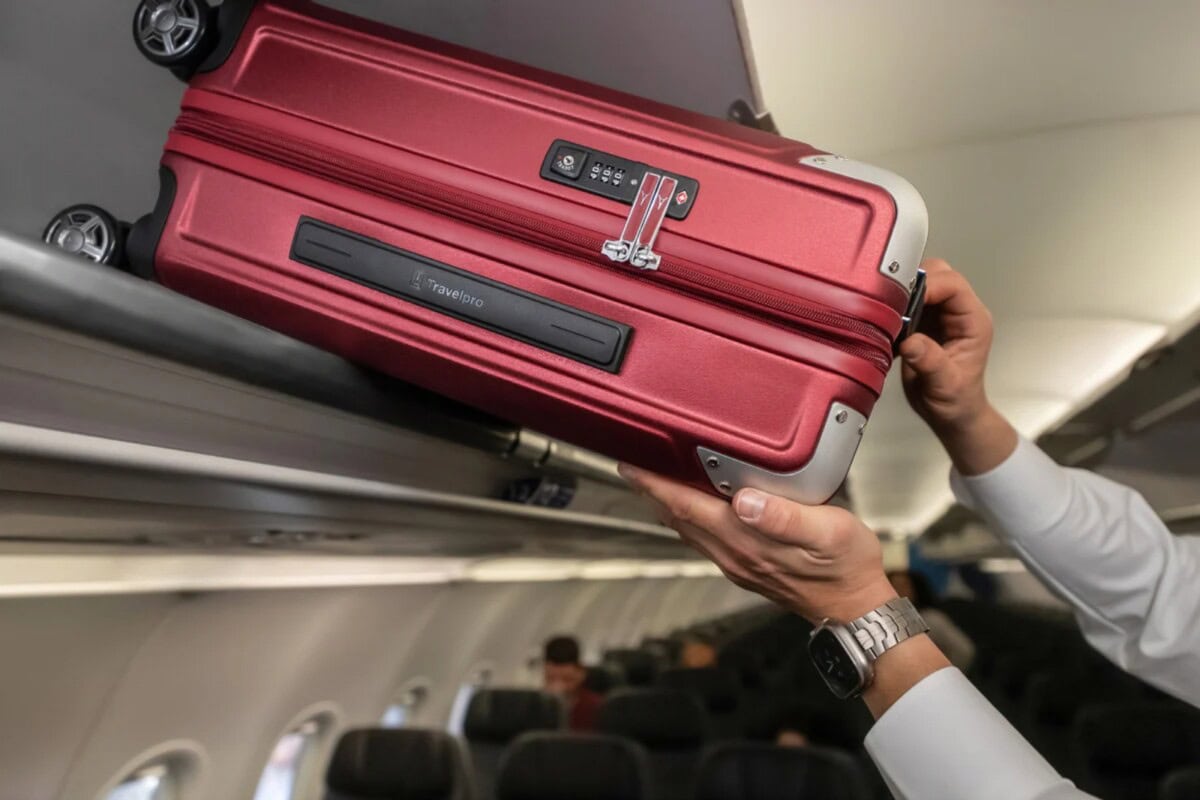
Now, let’s take the previous tip a step further. If you can manage it, traveling with only carry-on luggage or a travel backpack is the ultimate way to streamline your travel experience. It might seem challenging at first, but with practice, it’s entirely doable for most trips.
Here’s why I’m a big advocate for carry-on only travel:
- You save time at the airport. No waiting to check bags or pick them up at the carousel.
- There’s no risk of lost luggage.
- It’s often more cost-effective, especially with airlines that charge for checked bags.
- You’re more mobile and flexible. It’s much easier to navigate public transportation or walk to your accommodation with a single, manageable bag.
- It forces you to pack more efficiently and thoughtfully.
To make carry-on only travel work, you’ll need to employ all the packing tips we’ve discussed so far: choose versatile clothing, limit your shoes, use travel-sized toiletries, and pack efficiently using methods like rolling clothes and using packing cubes.
Of course, flying carry-on only won’t work for every person or for every trip. For longer trips, travels to multiple climates, or trips requiring special equipment, you might need to check a bag. But for most vacations, business trips, or weekend getaways, a well-packed carry-on can be all you need.
14
Pack Heavy Items at the Bottom
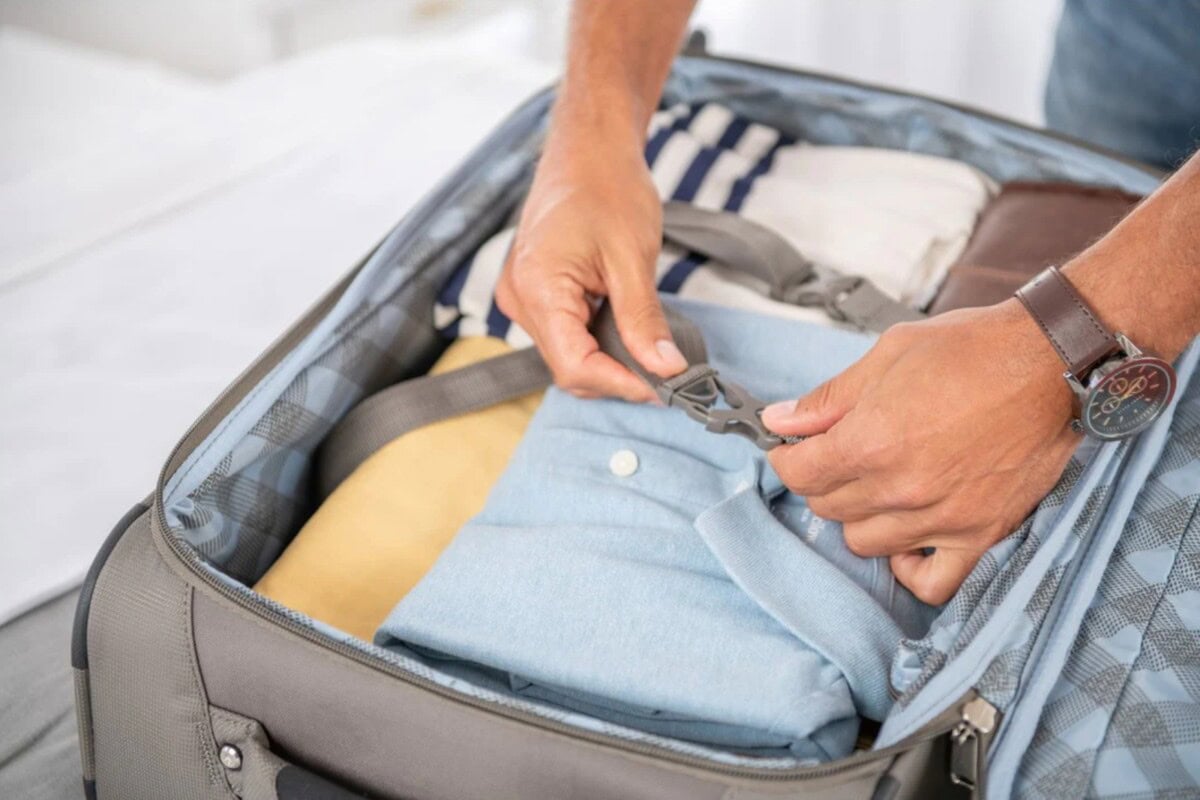
It doesn’t take a degree in physics to understand that a top-heavy suitcase is more likely to tip over. In the same way, a too top-heavy travel backpack makes you more likely to tip over.
When you pack, start by placing your heaviest items at the bottom of your bag, near the wheels if it’s a rolling suitcase. This typically includes shoes, books, heavy coats, toiletry bags, and any other weighty items. This makes your suitcase or backpack more stable, and it makes it less likely for things to shift during travel.
After the heavy items, layer in your clothes, and then lighter items like scarves, undergarments, or that bag of potato chips you magically have room for can go on top. This makes them easy to access and prevents them from getting crushed.
15
Make Your Luggage Recognizable
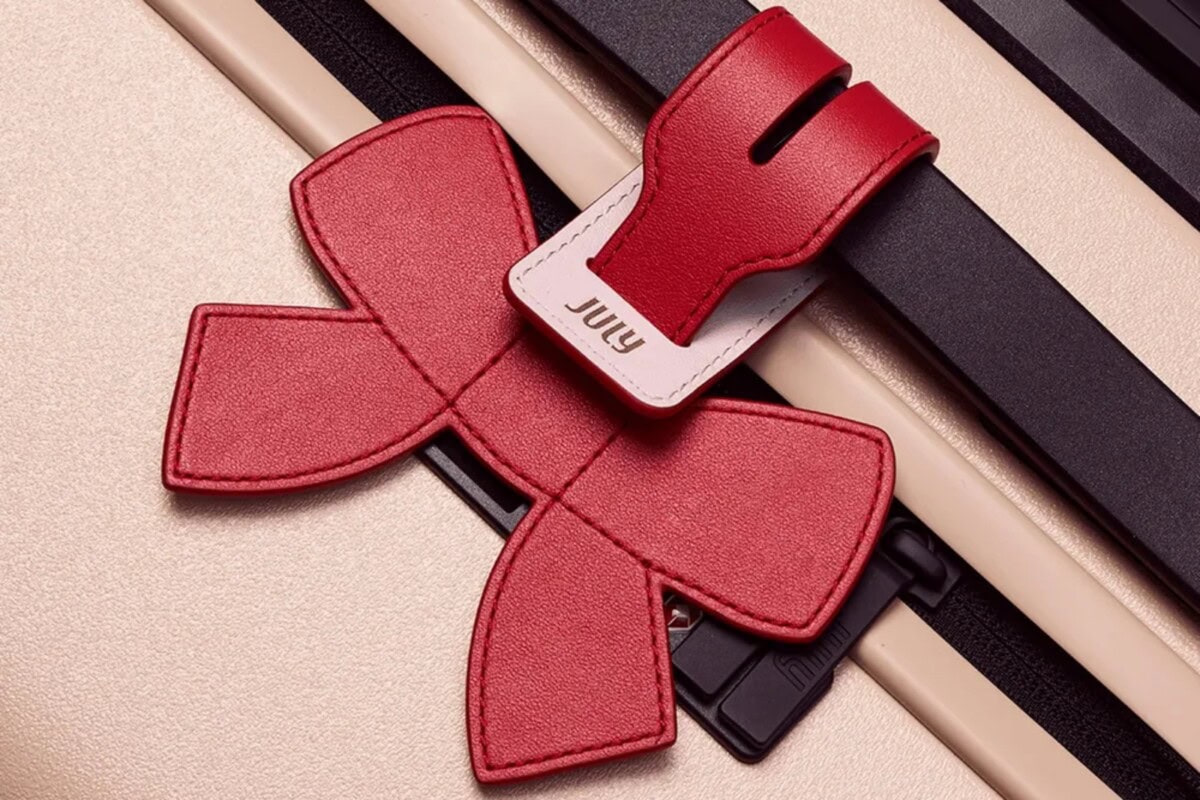
Picture this: you’re standing at the baggage carousel, watching a sea of nearly identical black suitcases go by. Suddenly, you’re not so sure which one is yours.
I’ve been there before, anxiously looking at every luggage tag to see if it’s mine. I hate that, so I started wrapping bright duct tape or a colored handkerchief around the handle of my suitcase. That way, I could instantly spot it on the conveyor belt.
Here are some ways to make your luggage stand out:
- Choose a suitcase in a bright color or distinctive pattern.
- Add a brightly colored luggage tag with your contact information.
- Tie a colorful ribbon or strap around the handle.
- Use stickers or decals to decorate your suitcase (just make sure they’re durable).
- Wrap a strip of brightly colored duct tape around the handle or edge of your suitcase.
Whatever method you choose, make sure it’s something that won’t easily fall off or get damaged during travel. And remember, while you want your luggage to be recognizable, you don’t want it to be so flashy that it attracts unwanted attention.
Also, I recommend a photo of your luggage before you travel. This can be helpful if you need to describe your bag to airline staff in case it gets lost.
16
Bring a Reusable Water Bottle
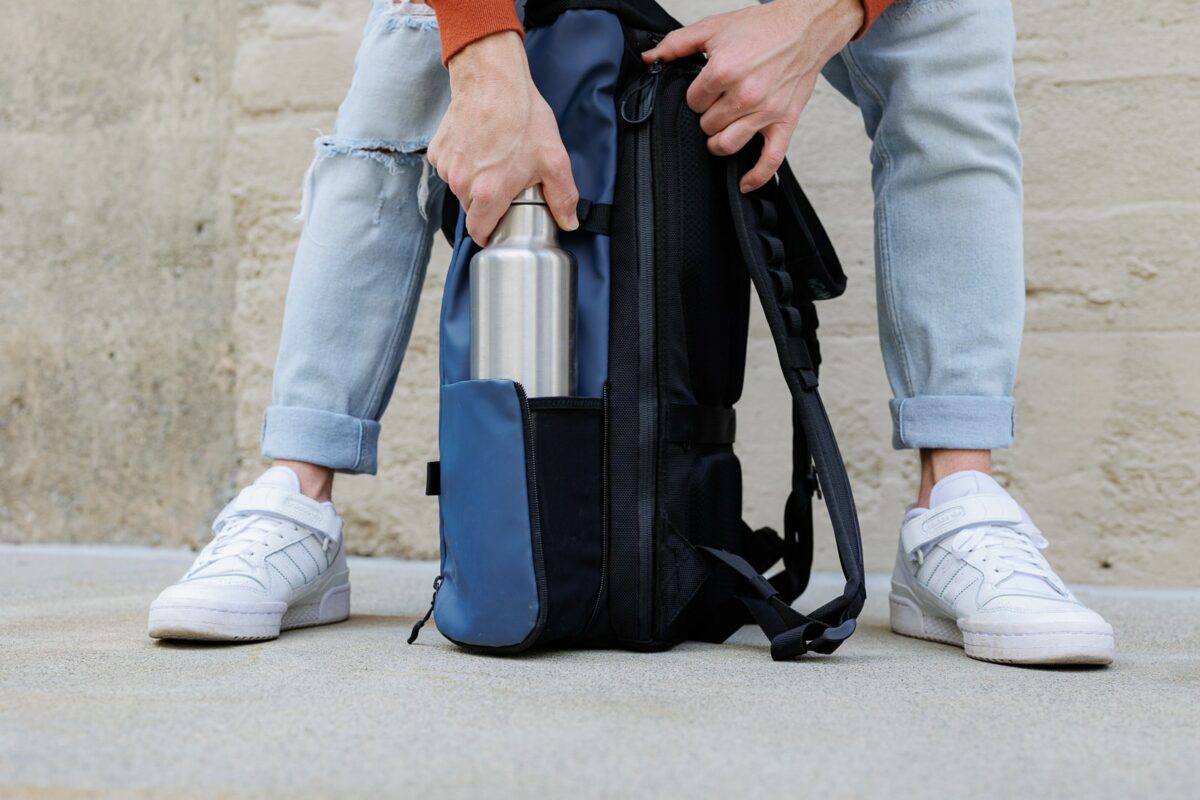
Staying hydrated is crucial when you’re traveling, but buying bottled water at every turn can be expensive and environmentally unfriendly. That’s why you should always pack a reusable water bottle, no matter where you’re traveling.
A good travel water bottle should be lightweight, durable, and easy to clean. I love the durable and insulated YETI Rambler Bottle.
There are many great options on the market, from simple plastic bottles to high-tech insulated ones. Some even come with built-in filters, which can be handy if you’re traveling to places where tap water isn’t safe to drink.
Remember to empty your water bottle before going through airport security, but keep it easily accessible so you can refill it once you’re through.
17
Bring a Packable Backpack
It took a while for me to finally purchase a packable backpack, and now I never travel without one. I highly recommend the Matador Freerain 22. It collapses down to the size of a tennis ball, but it’s big enough to carry the essentials I want to keep with me.
A packable backpack is a very versatile piece of travel gear. It can serve as your personal item during flights, it can carry your stuff for day excursions at your destination, and it even gives you some extra space for taking home souvenirs.
Remember, this isn’t meant to replace your main luggage—it’s an additional tool to make your travels more convenient and flexible. It’s perfect if you’re exploring a new city, heading to the beach, or need an extra bag for shopping.
18
Double Check Your Luggage Size and Weight
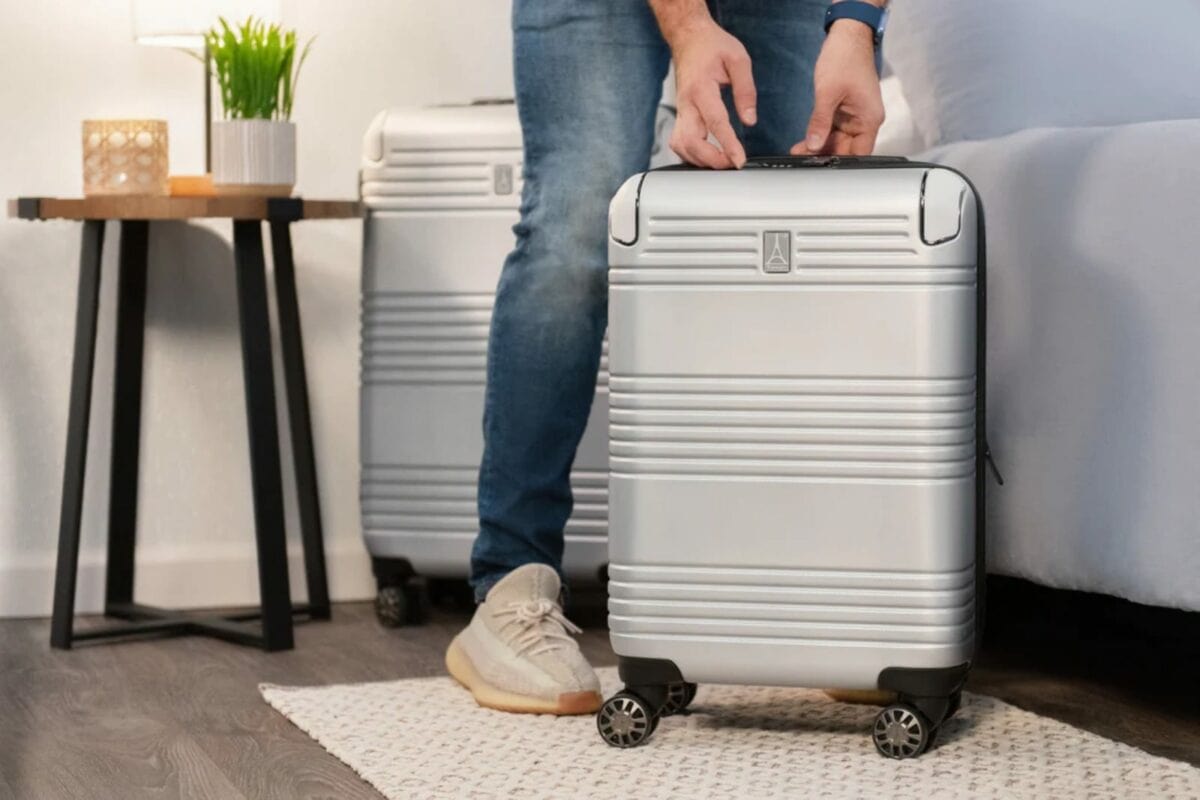
Getting to the airport with a too big or too heavy suitcase is a hassle. I’ve occasionally had to rearrange gear between multiple bags to balance the weight or scramble to get important items out of my carry-on because I was forced to check it.
No fun.
Now, I always double check my luggage size and weight before I fly, just to be safe.
Here’s what you need to do:
- Check your airline’s website for their specific luggage size limits and weight limits. These can vary between airlines and even between different types of tickets on the same airline.
- Measure your luggage. For carry-ons, measure the height, width, and depth, including wheels and handles.
- Weigh your luggage. Use a luggage scale if you have one, or a regular bathroom scale can work in a pinch.
- If you’re close to the weight limit, wear your heaviest items (like boots or a jacket) and put heavy items like books or electronics in your personal item.
- Leave some wiggle room. If you’re right at the limit, consider removing an item or two. You might want to bring back souvenirs, and you don’t want to be over the limit on your return journey.
Remember, some budget airlines have particularly strict luggage policies, so always double-check, even if you think you know the rules.
19
Review and Remove Non-Essentials
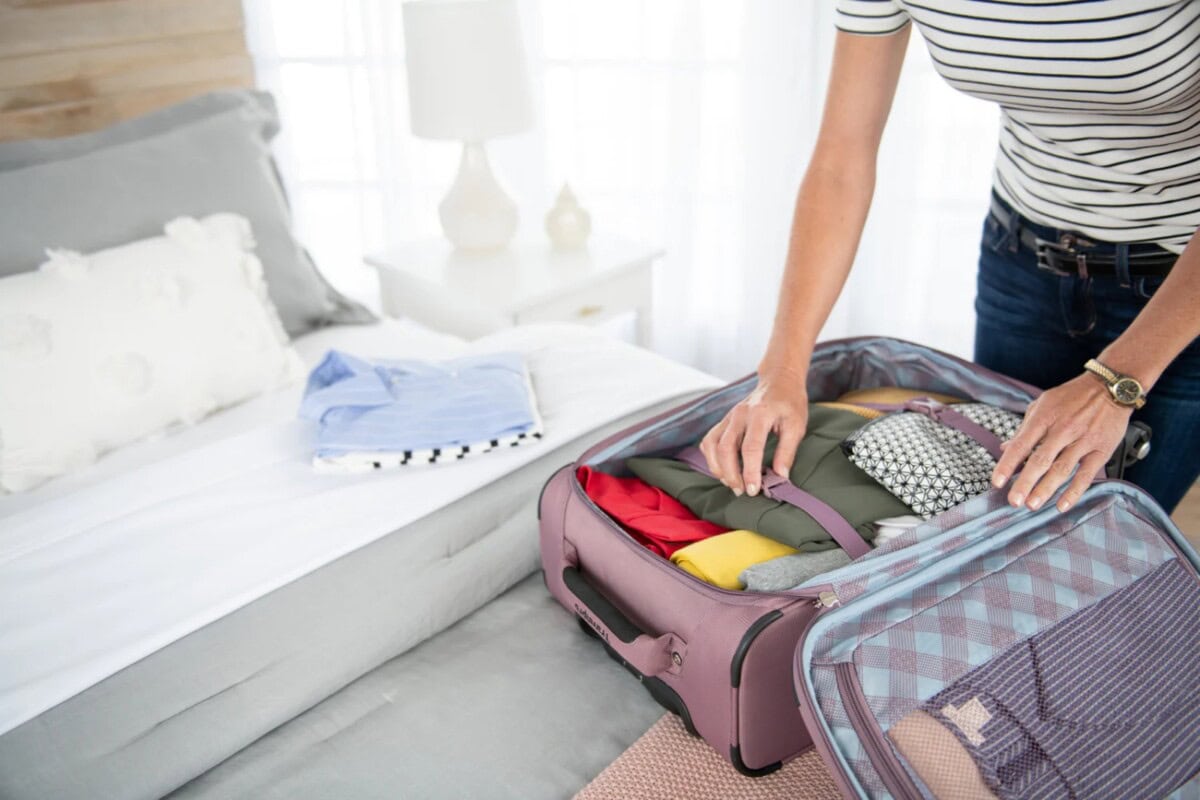
Once I have everything packed and ready to go, it’s time for a final review. I always do this to make sure I’m carrying everything I need and, just as importantly, nothing I don’t. Here’s a good process for reviewing your gear before your trip:
Lay out everything you’ve packed and go through each item, asking yourself:
- Will I definitely use this on my trip?
- Can I easily buy this at my destination if I really need it?
- Am I packing this “just in case,” or do I have a specific plan to use it?
- If I’m packing multiples (like shirts), do I really need this many?
Be honest with yourself during this process. It’s easy to justify bringing items “just in case,” but more often than not, these items end up being dead weight in your luggage.
Remember, less is often more when it comes to travel. The lighter your luggage, the more mobile and flexible you’ll be on your trip. Plus, having less stuff to manage means you can focus more on enjoying your travels.
If you’re struggling to remove items, think about your past trips. Were there things you packed but never used? Use these experiences to inform your current packing decisions.
20
Use a Smaller Bag
Our final tip brings us full circle to the concept of efficient packing: use a smaller bag. This might seem counterintuitive—surely a bigger bag means you can bring more stuff, right?
But here’s the thing: people naturally tend to fill the space we have available. By intentionally choosing a smaller bag, you force yourself to pack more efficiently. That’s why this is our number one piece of advice for how to travel light.
Of course, the size of your bag should be appropriate for the length and nature of your trip. But in general, most people can get by with less than they think they need.
Remember, the goal isn’t to make packing difficult or to deprive yourself of necessities. It’s about being intentional with what you bring, so you can focus on the experiences of your trip rather than managing excessive luggage.
Final Thoughts
Remember, efficient packing is a skill that improves with practice. Don’t be discouraged if your first attempt at implementing these tips doesn’t go perfectly. Each trip is an opportunity to refine your packing strategy and figure out what works best for you.
The ultimate goal of all these packing tips is to make your travels smoother and more enjoyable. When you’re not weighed down by excessive luggage or stressed about forgetting essentials, you’re free to fully immerse yourself in the experiences of your journey.
So, as you prepare for your next trip, give these tips a try. Embrace the freedom of traveling light, the peace of mind that comes with being organized, and the joy of having everything you need (and nothing you don’t) as you explore new destinations.
Safe travels, and happy packing!
Packing Tips FAQs
What is the 1 2 3 4 5 rule for packing?
The 1 2 3 4 5 rule for packing means you should bring 1 hat, 2 pairs of footwear, 3 bottoms, 4 tops, and 5 pairs of socks and underwear.
What is the smartest way to pack?
Rolling clothes and using packing cubes are some of the smartest techniques to pack your suitcase.
Is it better to fold or roll clothes when packing?
It’s best to use a combination of rolling and folding. Roll casual clothing like t-shirts, pants, and even underwear, but fold stiffer or more formal clothes like blazers, dresses, or button-ups.
How do I make my packing not overwhelming?
The best way to make packing less overwhelming is to start with a plan and follow expert packing advice.
How to pack shoes in a suitcase?
To pack shoes in a suitcase, use a shoe bag to keep them separate from your clothes, stuff socks inside to save space, and place the soles against the bottom or sides of your suitcase.



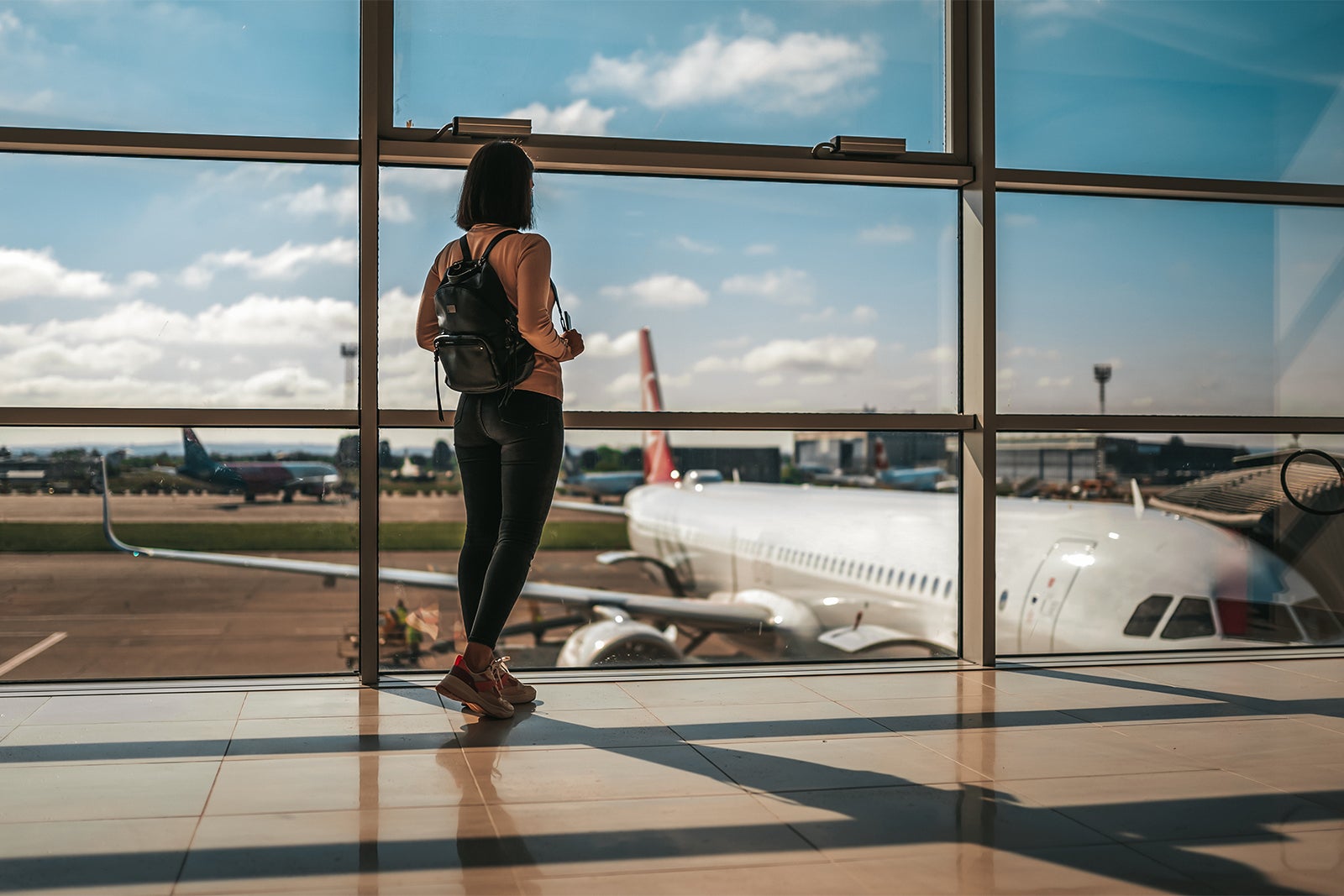


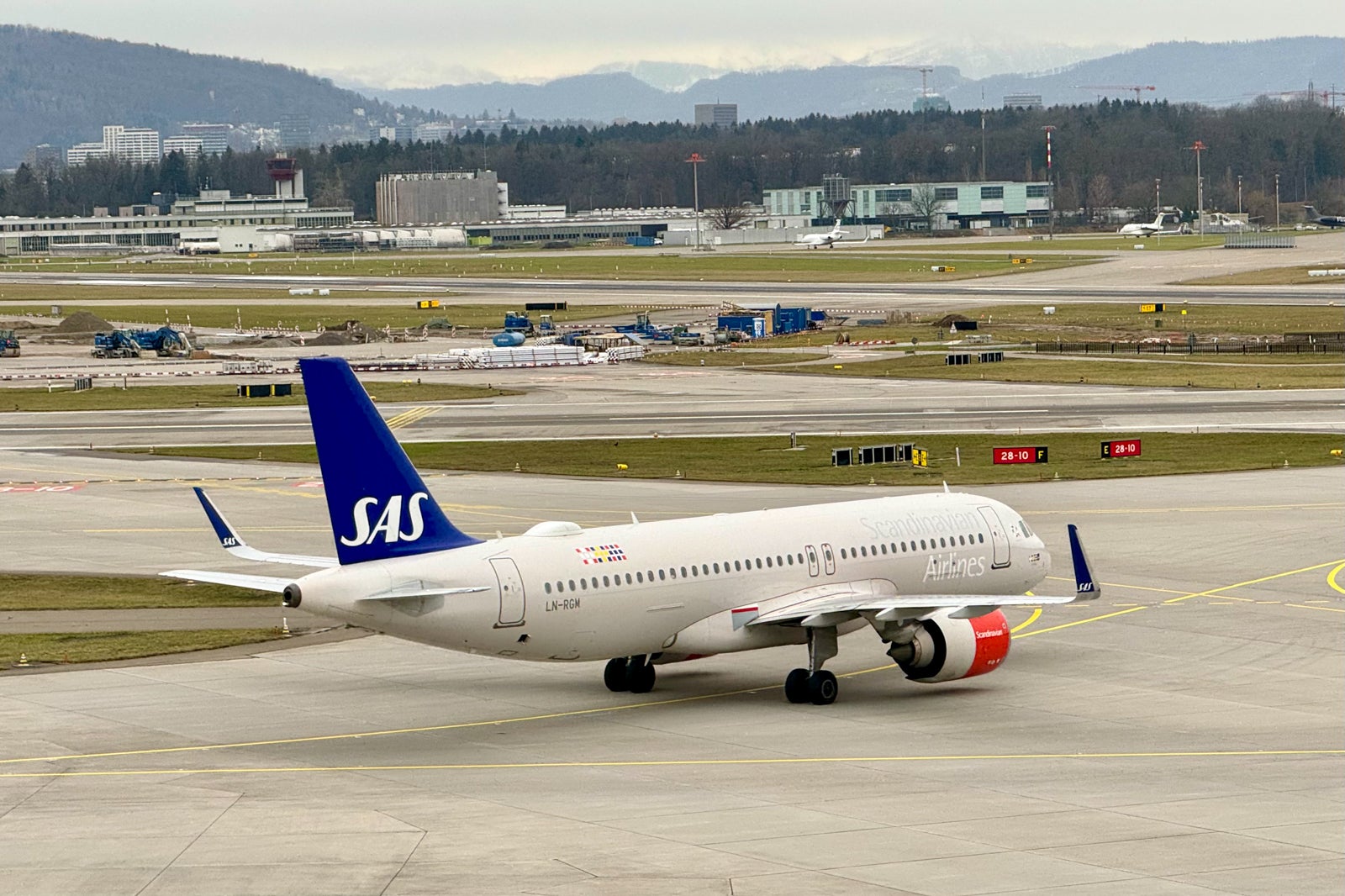





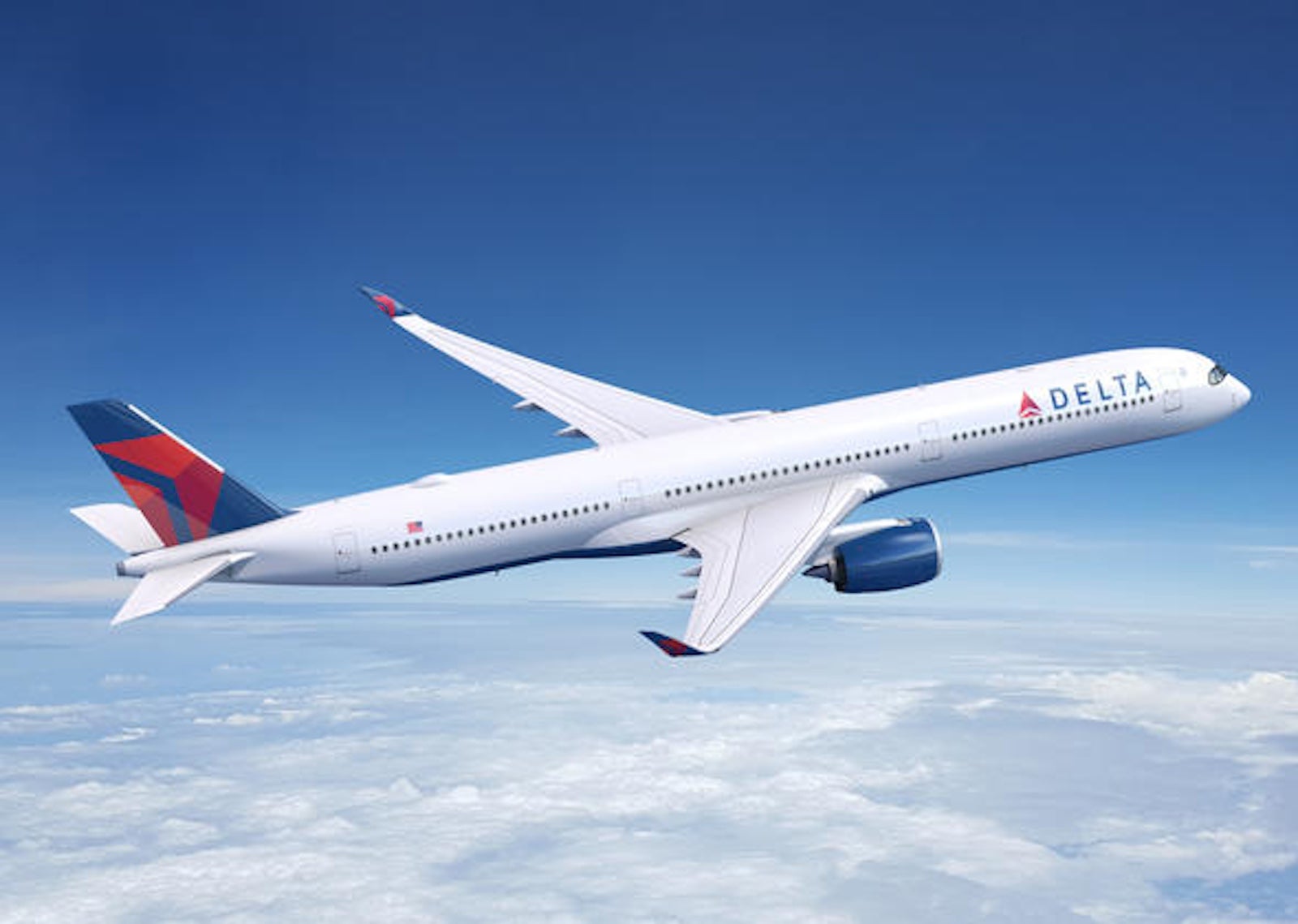
![GoPro HERO 13 Review – The Ultimate Camera Guide [2024]](https://www.nomadasaurus.com/wp-content/uploads/2024/09/GoPro-HERO-13-Black-Review-Feature-Image.jpg)




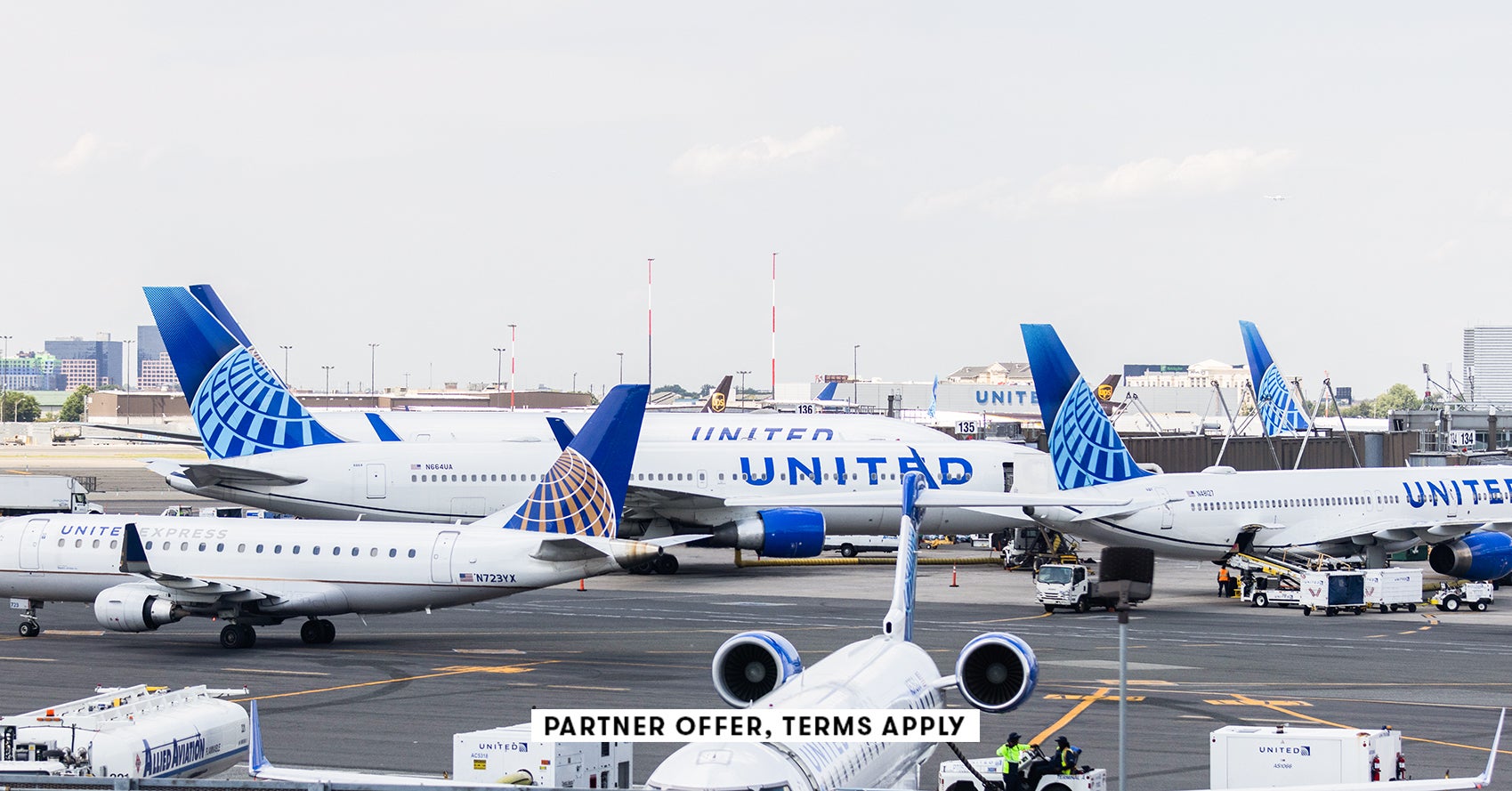
 English (US) ·
English (US) ·